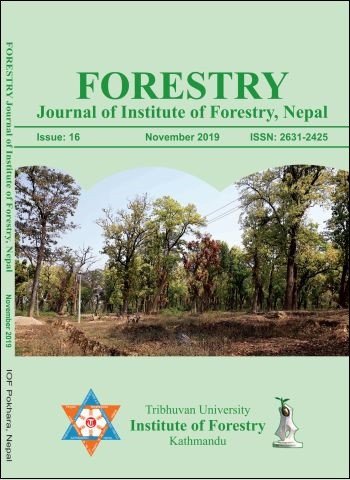Threats and Conservation of Paris polyphylla: Vulnerable Medicinal Plant in Panchase Protected Forest, Nepal
DOI:
https://doi.org/10.3126/forestry.v16i0.28351Keywords:
Threat factors, medicinal and aromatic plant, interventions for conservation, illegal collection, forest fire, harvesting techniques, impacting threatAbstract
Government of Nepal has enlisted Paris polyphylla as the priority medicinal and aromatic plant (MAPs) for the economic development of the country due to its high market price and demand. But in Panchase Protected Forest (PPF) its value is not well recognized. Therefore, this study aimed to explore the distribution of the plant, assess threats and interventions for conservation and promotion in Bhadaure Tamagi area of Kaski district. Participatory resource mapping, semi-structured questionnaire and key informant survey were carried out for data collection. The plant was distributed at nine different patches of the forest at moist, fertile, and sloppy sites in Northern and Eastern aspects, and spotted only at two patches. Among 10 threat factors, illegal collection with Relative Threat Factor Severity Index (RTFSI) value of 0.90 was the major threat to the plant, and forest fire with value of 0.25 was the least impacting threat. Poor management and institutional factors were not understood by local people directly. Though the plant has high market value, only 6% of the locals used the plant for direct income whereas the rest used for the household purpose as they have no idea of the market. It is recommended to empower and support local people for commercial cultivation and trade, sustainable harvesting techniques, and to bring all the concerned stakeholders of PPF together to work effectively to conserve and promote this wonder herb.
Downloads
Downloads
Published
How to Cite
Issue
Section
License
© Tribhuvan University, Institute of Forestry




